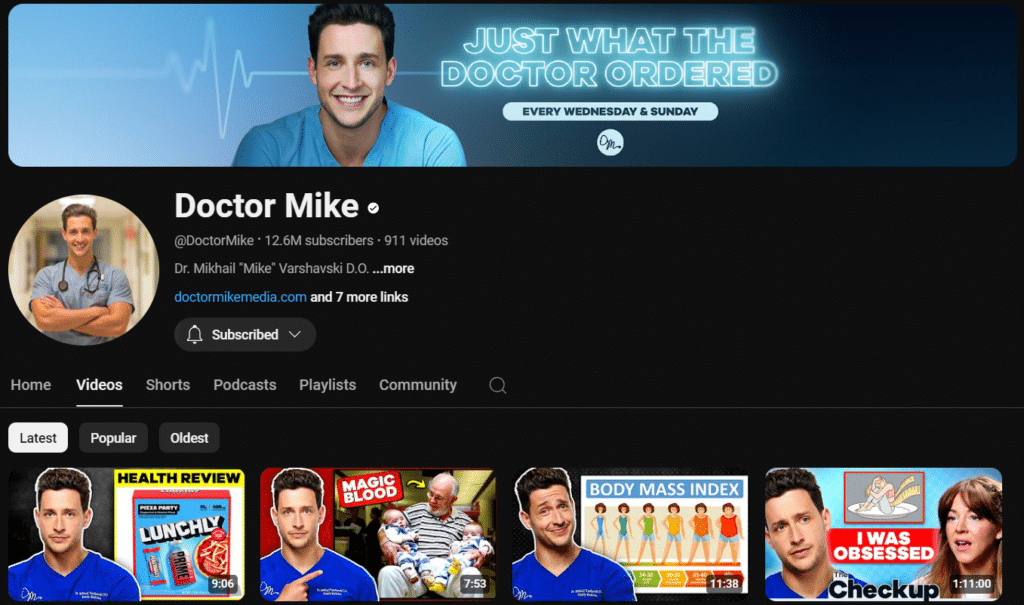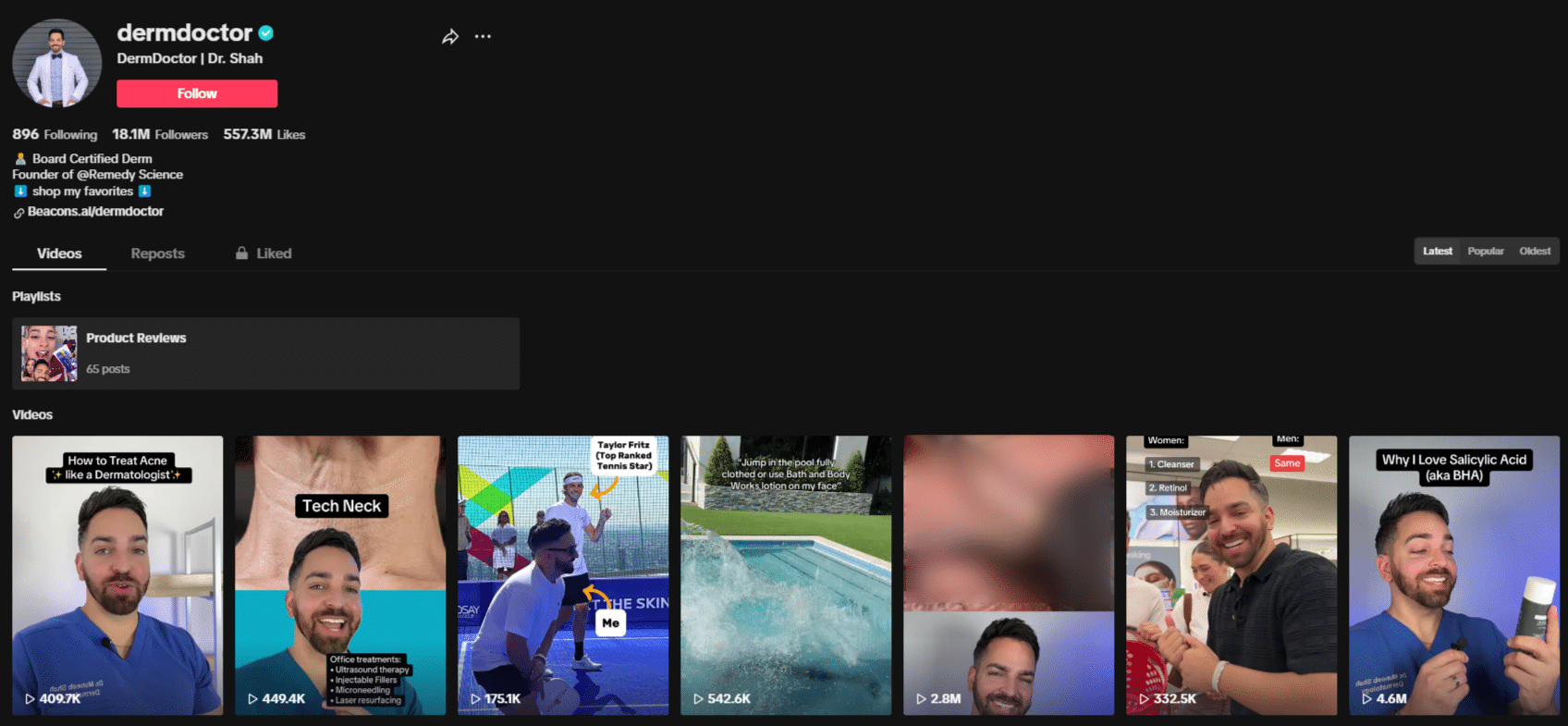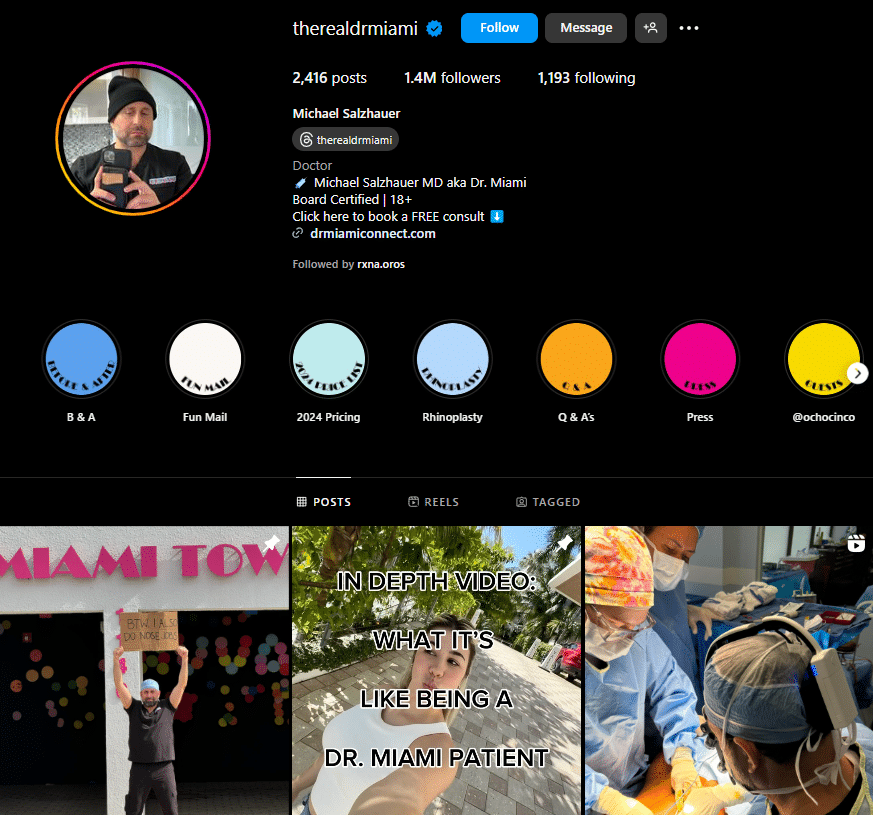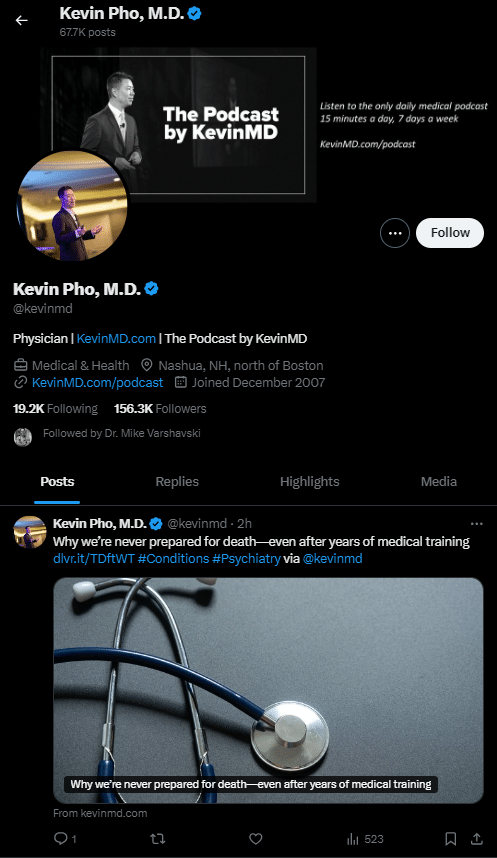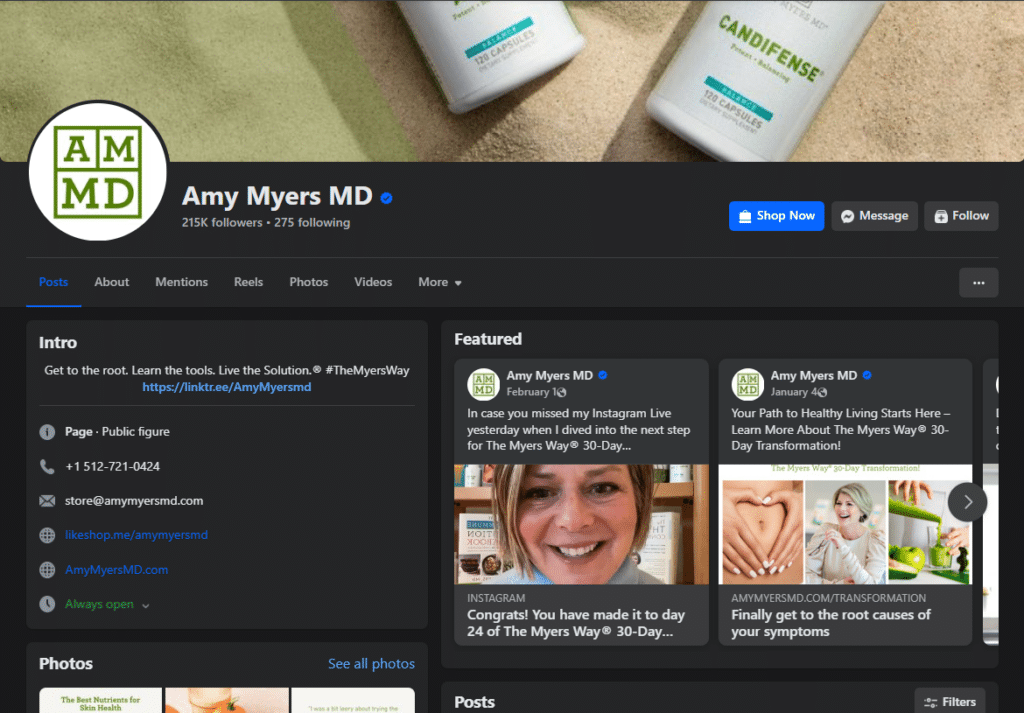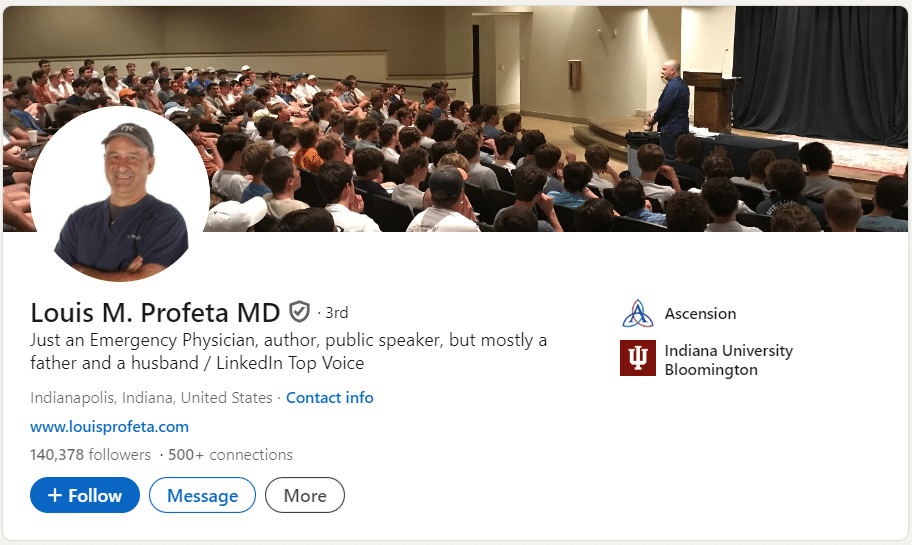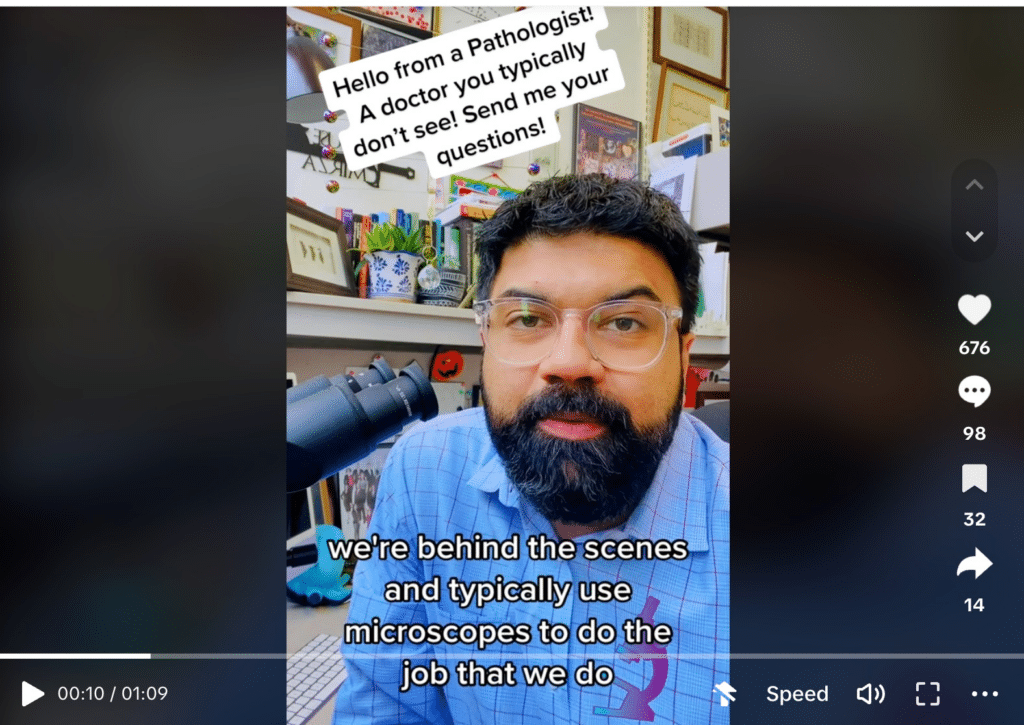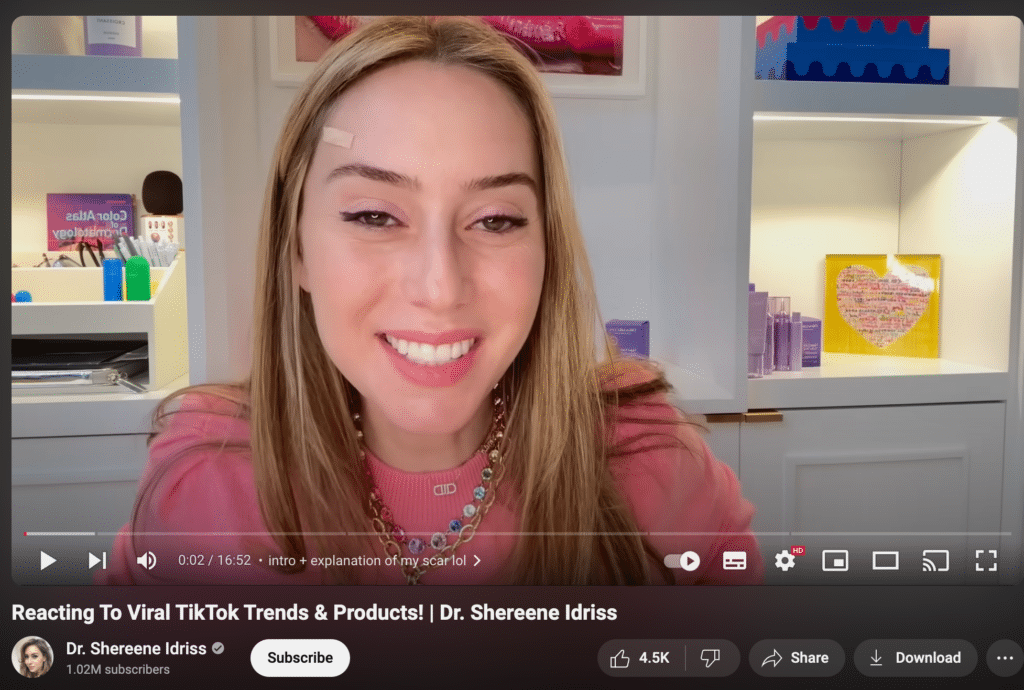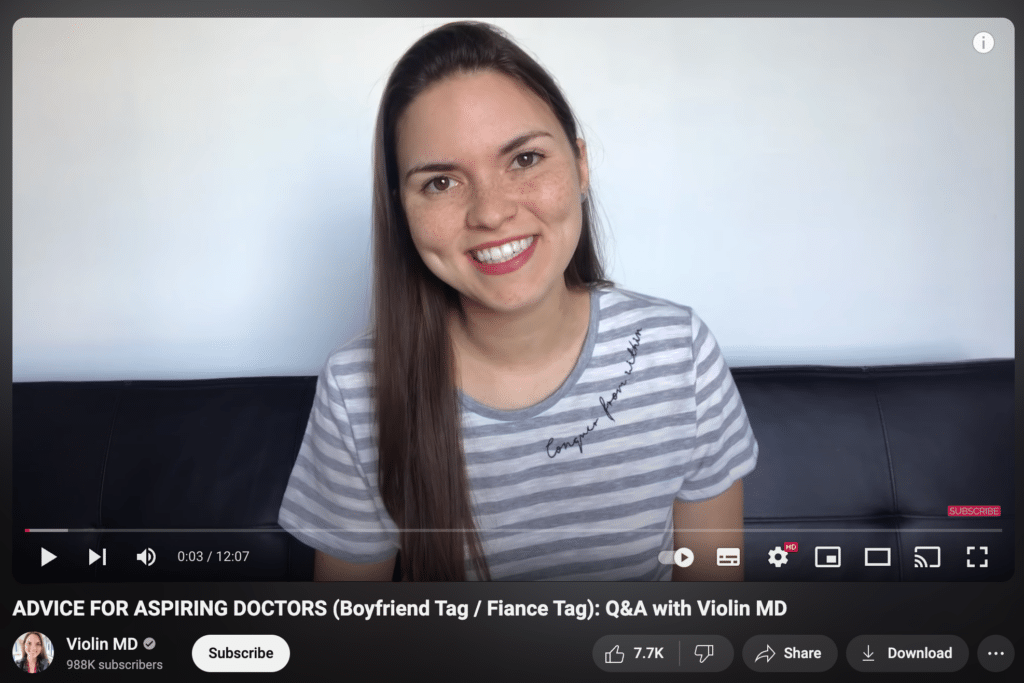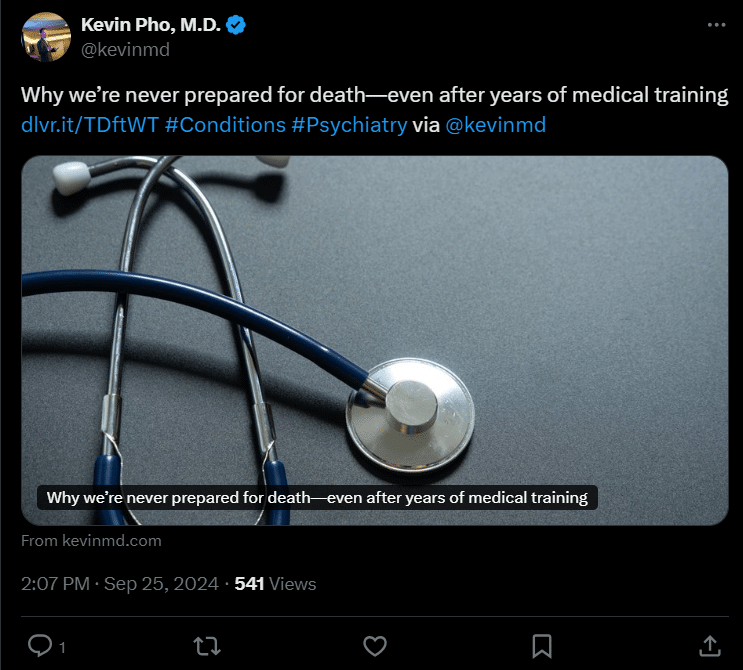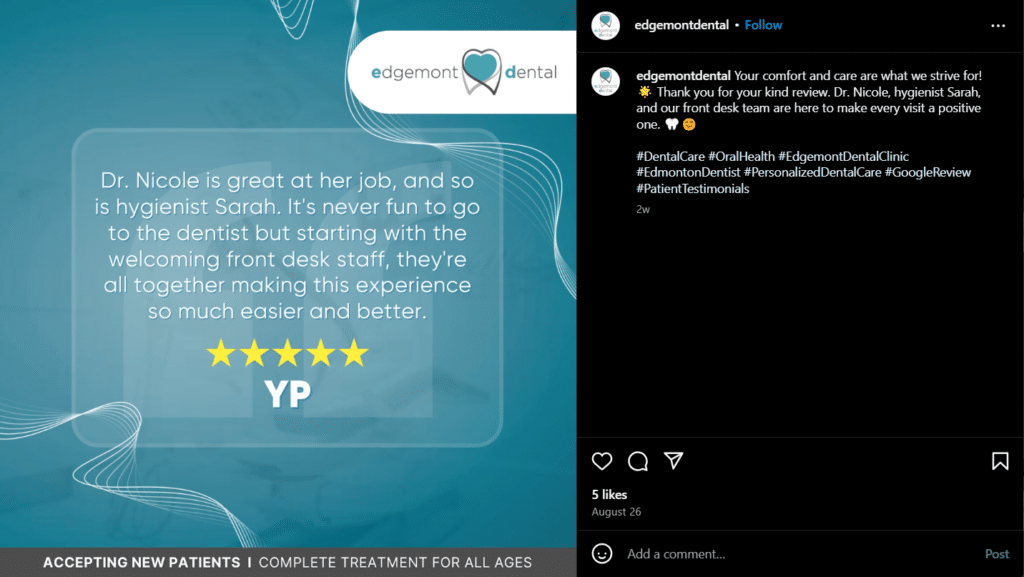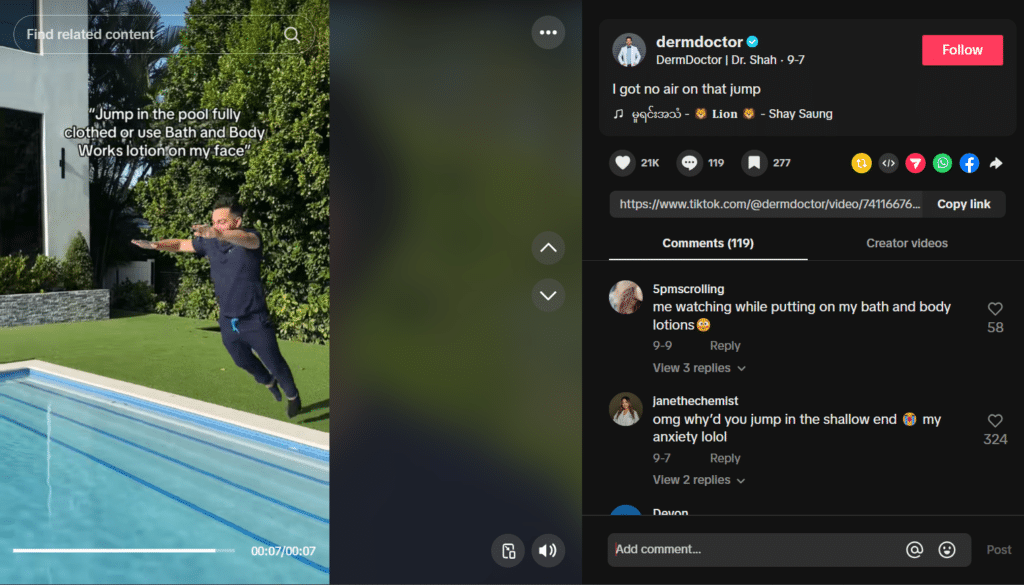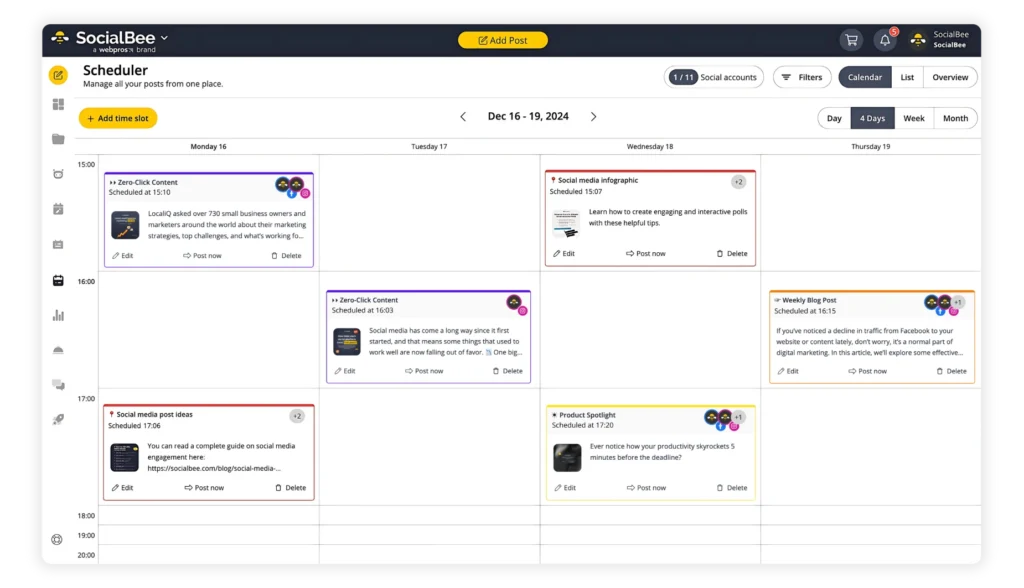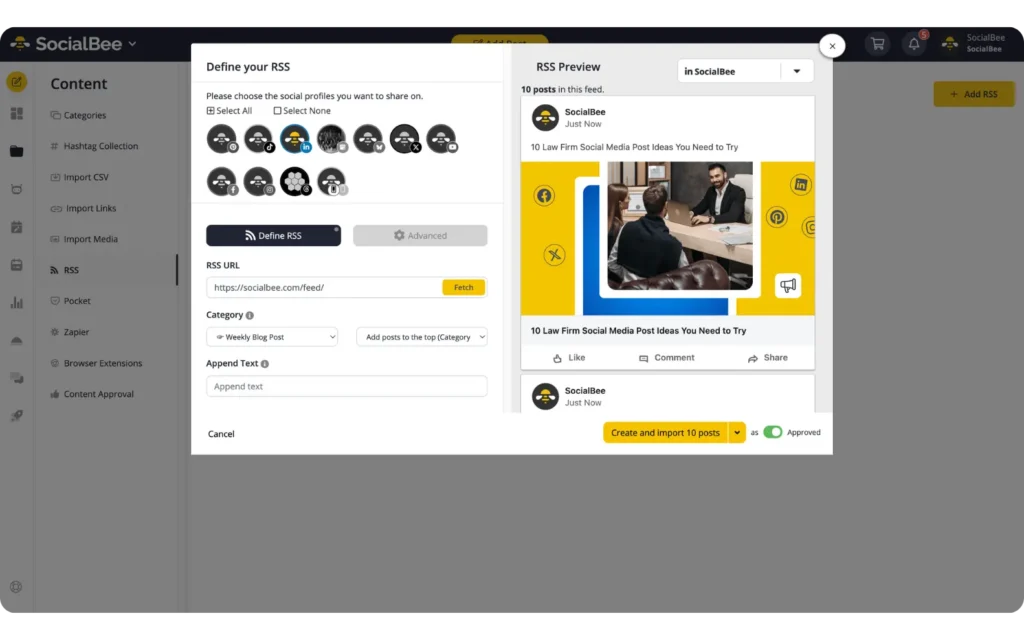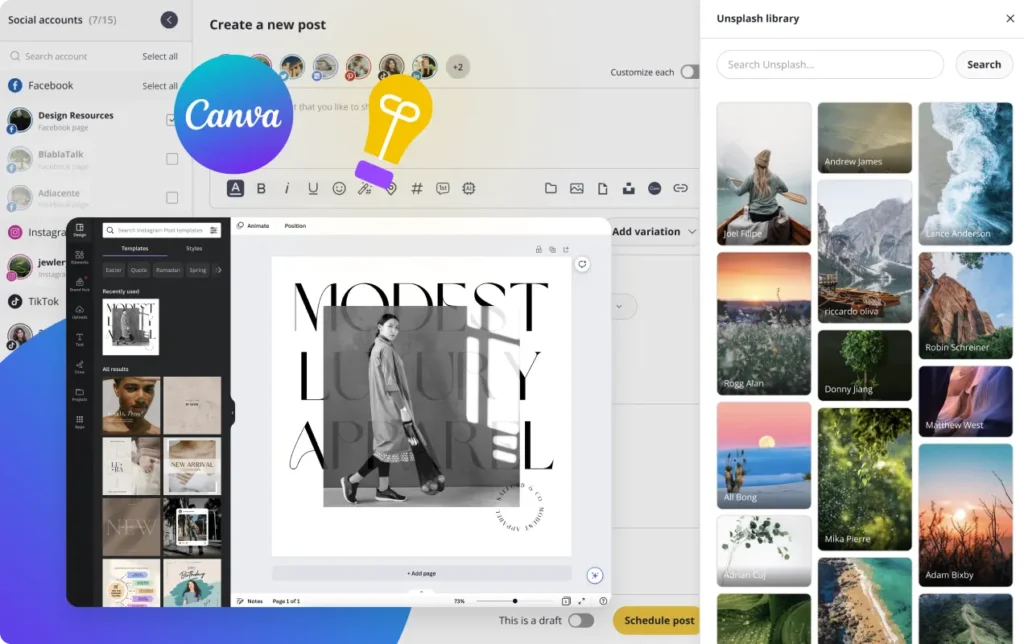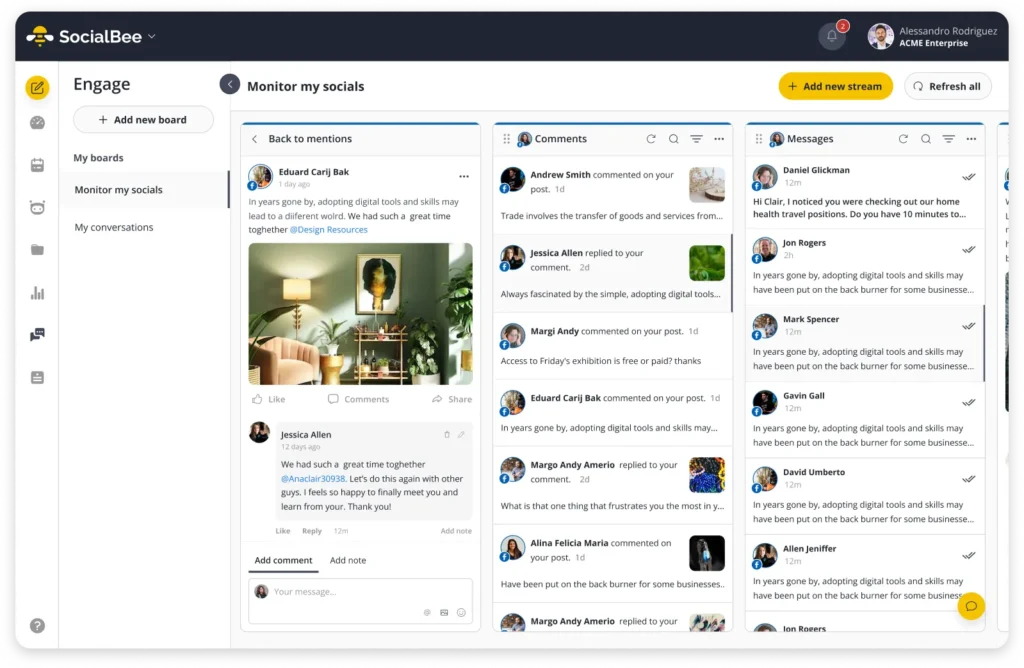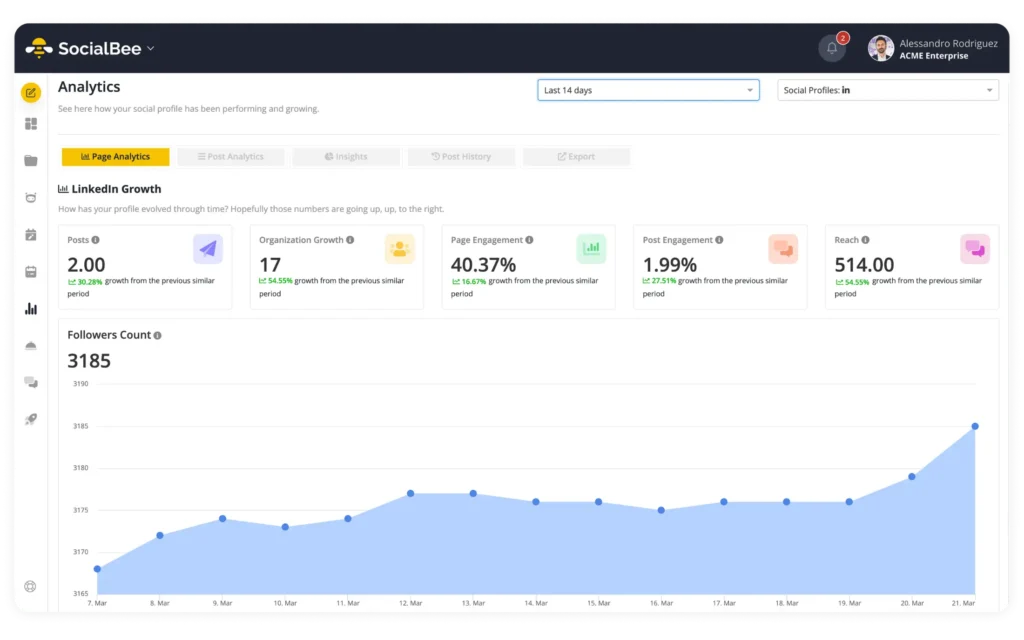
Guest Author
Welcome to the dynamic world of social media for doctors – a vital frontier for modern health professionals.
In today’s digital age, doctors must establish a presence on social media platforms. This approach isn’t just about self-promotion; it’s about connecting with patients, building a personal brand, and fostering valuable networks within the medical community.
However, the role of doctors on social media extends beyond these personal benefits. With an audience eagerly seeking trustworthy health information, doctors have a golden opportunity. By mastering social media management, they can transform into influential figures in their specialties.
This post will guide you through the top social media platforms for doctors, content ideas to include in your social media strategy, and some of the challenges to consider before posting online.
We’re SocialBee LABS SRL, part of WebPros. We use the information you provide to share relevant content and product updates, as outlined in our Privacy Policy. You can opt out anytime.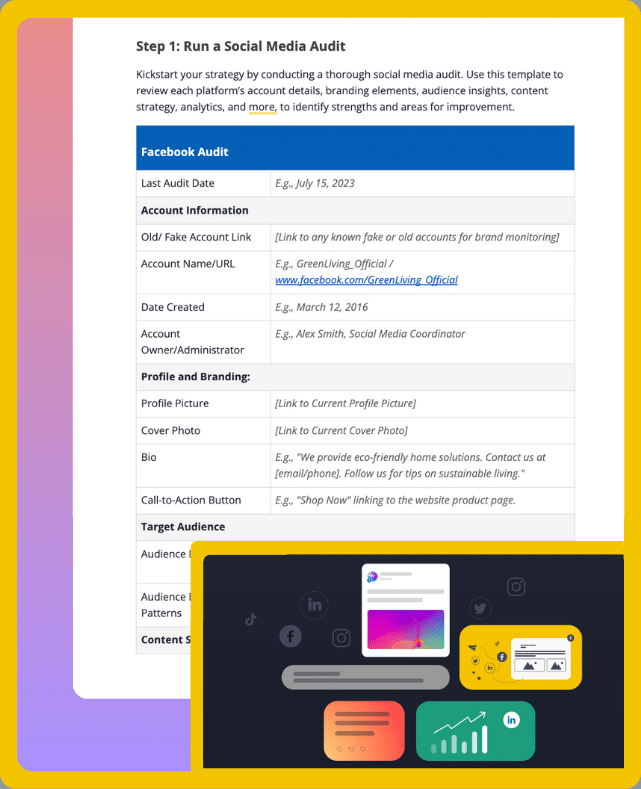
Short Summary
- Social media is essential for doctors as it allows them to build their personal brand, share educational resources, and engage with the medical community.
- Many doctors are active on traditional social media channels, like YouTube and TikTok. Others choose to post on networks specialized for healthcare providers, such as Daily Rounds or Student Doctor Forum. The best social media platforms for you depend on your goals and the audience you’re trying to reach.
- Doctors can create educational and engaging social media content – from reacting to viral trends and debunking myths to hosting Q&As and quizzes.
- The same ethical principles that you follow offline also apply online. Before starting on social media, consider your institution’s social media policy and local legal regulations.
- Using a social media management tool such as SocialBee as a doctor can help you plan and schedule your content across platforms. This way, you don’t have to share posts manually by switching from platform to platform.
cWhy Should Doctors Focus on Their Social Media Strategy?
When everyone and everything is happening on social media sites, having an active social media presence can be essential for doctors or other healthcare professionals.
Here are a few reasons doctors should be active on social media sites:
- Reach patients
- Educate their audience
- Improve customer service
- Network with online personalities
- Build their brand
1. Reach Patients
A robust social media presence aids in building trust and brand awareness. Leveraging social media as a doctor can help you build loyalty with current patients and attract new ones.
Posting actively on every social media network also keeps you on top of patients’ minds. Whenever they need to treat a clinical health issue, they’ll think of you and trust your expertise because they are familiar with your online persona.
2. Educate Your Audience
The popularity of social media makes it an excellent platform for reaching and educating a broad audience.
You can inform patients about required checkups, common misconceptions, latest medical trends and best healthcare practices. Share recent research data and commentary to make it accessible to the general public.
This approach can encourage them to make healthy and informed lifestyle choices.
3. Improve Customer Service
You can use social media to provide convenient customer service and establish a strong connection with your patients outside your doctor’s office.
You can allow new patients to request appointments through Facebook or Instagram. Or, if for example, you are a sports medicine specialist, you can publicly address frequently asked questions about musculoskeletal health and answer potential patients in direct messages.
4. Network with Online Personalities
Social media presents an unmatched opportunity for networking with other medical professionals and influencers promoting healthy lifestyles. Thus, it opens the doors to diverse collaboration opportunities.
Let’s say you’re a medical oncologist who wants to raise awareness around breast cancer. You can partner with colleagues from the same or related fields to discuss the latest research around breast cancer prevention. Another option is to co-create content with an influencer that has a predominantly female audience.
5. Build Your Brand
Branding is the process of establishing a unique identity that separates you from others in your niche. Social channels provide a platform where you can share your experience, skills, and values, helping you build a strong brand that sets you apart.
To start with branding, decide what you stand for and what you want to represent as an individual.
Next, define your desired audience, how you want to make them feel, and what impact you want to have through your content. Browse examples of successful personal brands to gather ideas and inspiration.
Top Social Networks for Healthcare Professionals
When deciding what social media to use as a doctor, you can opt for platforms specifically designed for physicians or traditional social channels.
Let’s take a look at both options:
- Social media platforms designed for the healthcare industry
- Traditional social media platforms for doctors
1. Social Media Platforms Designed for the Healthcare Industry
As a doctor, health information technology can significantly impact your professional networking and patient outreach. Specialized social media platforms designed specifically for the healthcare industry offer unique opportunities for collaboration, learning, and professional growth.
Here are some notable platforms designed for healthcare professionals:
- DailyRounds: A network that offers case studies and discussions, making it ideal for doctors who want to share and learn from real-world medical cases.
- Virtual Doctors Lounge: The Virtual Doctors Lounge platform serves as a virtual meeting space for physicians to discuss medical cases, share insights, and seek advice from peers.
- Among Doctors: A community where healthcare professionals can network, collaborate, and share their expertise.
- Student Doctor Network Forum: An invaluable resource for students and practicing doctors alike, this forum provides a space for educational discussions and career advice.
- Sermo: Known for its large network of verified physicians, Sermo offers a platform for medical surveys, discussions, and collaboration on patient care.
- Doximity: Often dubbed as ‘LinkedIn for doctors,’ Doximity provides a professional network for clinicians to connect and collaborate.
These platforms provide a specialized environment where healthcare professionals can engage in detailed medical discussions, share case studies, and network with peers.
They are particularly valuable for those seeking a community of professionals with shared interests and challenges in the medical field.
2. Traditional Social Media Platforms for Doctors
Choosing the right social media apps as a doctor depends on your audience and goals:
- YouTube: Ideal for long-form, educational content. Create detailed videos about specific conditions and treatments for a broad audience.
- TikTok: Best for very short, engaging videos. Share quick tips and fun facts about your medical profession to reach a younger demographic with fast-paced content.
- Instagram: Use for slightly longer clips and photo-based content. Share before-and-after images, infographics, and short videos for a more personal connection.
- X (formerly Twitter): Ideal for real-time updates, brief insights, and professional discussions. Share news and link to longer content.
- Facebook: Great for building a community and engaging with a diverse age range. Share practice updates, patient stories, and informative posts.
- LinkedIn: Tailored for professional networking and in-depth, industry-focused content. Post medical news, research updates, and network with healthcare professionals.
Each social network serves a unique purpose, catering to different aspects of your professional and public outreach as a medical professional.
Successful Doctors on Each Social Media Platform
To better understand how to successfully build a social media presence on each of these platforms, let’s take a look at those who are doing it right!
1. Doctor Mike – YouTube
Doctor Mike is one of the most famous doctors on the internet, mainly due to his YouTube channel where he has an impressive 12.6 million subscribers. His content is all medical, though he finds ways to put a personal or humorous spin on it.
Some of his most popular videos include him reacting to various health-related content (e.g. memes, injuries from TV shows), educating his audience on medical subjects, or inviting other doctors to discuss topics from their area of expertise.
2. DermDoctor – TikTok
As of right now, Dr. Shah, aka DermDoctor, is the most followed medical influencer on TikTok, with 18.1 million followers. He is, as his name implies, a dermatologist.
Given TikTok’s vast skincare-related content, it makes sense that a dermatologist who can teach people how to better take care of their skin can become so popular on the social media site.
Since TikTok’s audience is mainly Gen Z, Dr. Shah knows that his content has to be relevant to a younger audience. Therefore, he mainly educates on topics such as acne, hyperpigmentation, and scalp itchiness, just to name a few.
His videos are short and concise, ranging from product recommendations to reactions to dermatological procedures and popular trends.
3. Dr. Miami – Instagram
Michael Salzhauer, aka Dr. Miami, is perhaps one of the funniest medical influencers on both TikTok and Instagram. As a plastic surgeon, his many healthcare practices allow him to have a more relaxed and humorous approach to his work, and it pays off since his profile has amassed 1.4 million followers to date.
A unique thing that Dr. Miami has done in his social media marketing strategy is heavily include his social media manager in the videos he posts, a young girl who brings a friendly, relatable vibe to the posts.
While he does feature the results of his work now and then to prove his expertise, most of his content consists of the latest social media trends.
When his social media manager is not making us all laugh out loud, she makes sure Michael Salzhauer has a consistent posting schedule of 4-5 posts a week and a colorful but cohesive Instagram aesthetic.
4. KevinMD – X (formerly Twitter)
Kevin Pho is a physician with an effective social media strategy for X (Twitter). His main focus is his podcast, The Podcast by KevinMD, which he promotes heavily on the platform along with his educational blog content.
His strategy is straightforward – he uses social media advertising to attract attention to his educational content by consistently sharing links with his audience. They are accompanied by captions meant to give an idea of what the podcast/article is about while leaving readers wanting more.
5. Amy Myers MD – Facebook
Amy Myers MD is a widely recognized health influencer, particularly popular on Facebook. As a functional medicine physician, she offers expertise in holistic wellness, focusing on autoimmune diseases and overall health optimization. Her professional background allows her to provide authoritative advice, which has garnered her a large and loyal following.
What sets Amy Myers MD apart in her social media strategy is her consistent delivery of educational content. She frequently shares health tips, product recommendations, and lifestyle advice, making accurate medical information accessible and easy to understand.
This blend of credibility, consistent value, and approachable tone helps her connect with her audience on a deeper level.
6. Louis M. Profeta MD – LinkedIn
Louis M. Profeta, MD, is a highly respected voice in healthcare and medicine, particularly on LinkedIn, where he has built a strong following by offering candid insights into the medical profession. As an emergency physician, his firsthand experience in life-and-death situations gives his content a depth of authenticity that resonates with healthcare professionals and the broader public alike.
What makes Dr. Profeta stand out on LinkedIn is his ability to blend powerful storytelling with educational content.
He often writes long-form posts that delve into personal experiences, ethics, and emotional reflections on patient care, creating a connection with readers beyond just professional expertise. His posts frequently go viral because they tap into the humanity of medicine, offering lessons that are both moving and thought-provoking.

Social Media Content Ideas for Doctors
Now that you know all the benefits of social media for doctors, let’s look at some content ideas and examples from physicians who’ve already amassed a large follower base.
Here are some examples of content doctors can share on their social media accounts:
- Show behind-the-scenes content
- Debunk myths
- React to popular videos
- Create helpful content
- Share patients’ success stories
- Host Q&As
- Test health knowledge with quizzes
- Post results of procedures
- Highlight client testimonials
- Participate in popular trends
1. Show Behind-the-Scenes Content
Uncover what happens behind the scenes – what doctors see but patients don’t.
People are always curious about the things they don’t have access to. That’s why bloopers or behind-the-scenes social media videos are so interesting.
Sharing a new perspective also allows people to understand and appreciate a physician’s job better.
Take a look at this TikTok video from a pathologist who explains their role in executing lab tests – something the general public can’t see.
The content should be informative yet accessible to a lay audience, helping to better understand the medical profession and highlighting the extensive work that goes into patient care behind the scenes.
2. Debunk Myths
Debunking common health myths is an excellent topic for content because it challenges popular misconceptions from the perspective of a trained professional. For audiences, it’s not only fascinating but also practical.
Health myths usually stem from traditional beliefs and have no scientific proof. While many are harmless or not effective, others might pose risks.
The rise of social media and self-proclaimed experts has led to a rapid spread of misinformation in all fields, including healthcare. As a professional, you are in a position to address inaccuracies, provide data-backed information, and educate.
Take inspiration from dermatologist Dr. Sam Ellis, who debunks some of the most popular hair care myths.
3. React to Popular Videos
Creating content around topics that are already popular or trending is a great way to reach new audiences. While you can follow the trends, many doctors decide to react to them.
For instance, TikTok’s platform is built to promote trends – trending audios, dances, video formats, products, etc. As a result, many health and beauty trends start on this social channel.
In this video, dermatologist Dr. Shereene Idriss reacts to skincare trends from TikTok. The products and techniques she reviews are somewhat beneficial, but she also reveals they do not work as promoted.
Another video idea comes from Doctor Mike, who reacts to a popular episode from Grey’s Anatomy and gives medical commentary.
As you can see, a certified physician can add much value by sharing informed opinions on popular social media or TV series videos.
4. Create Helpful Content
Physicians have a lot of useful information to share, and depending on their specialty, they can cover diverse topics.
You can get ideas for helpful content by noting questions or cases you often get in your practice. Is there something many patients seem to miss or something you get asked about daily?
Let’s look at an example of video marketing for dentists from Dr. John Yoo, who shares his oral care routine.
Covering such topics can educate your audience. Also, as your time during a patient’s visit is limited, you can point them to your resources for additional reliable information.
5. Share Patients’ Success Stories
Sharing success stories from your patients can be informative and inspirational, but it can also be promotional.
Some doctors can create before-and-after collages of their patients. It is a popular approach when you want to demonstrate changes—maybe your patient has lost weight, improved their posture, or had a cosmetic procedure. Here’s an example from a dermatologist showing the results of a patient who received treatments for uneven skin tone.
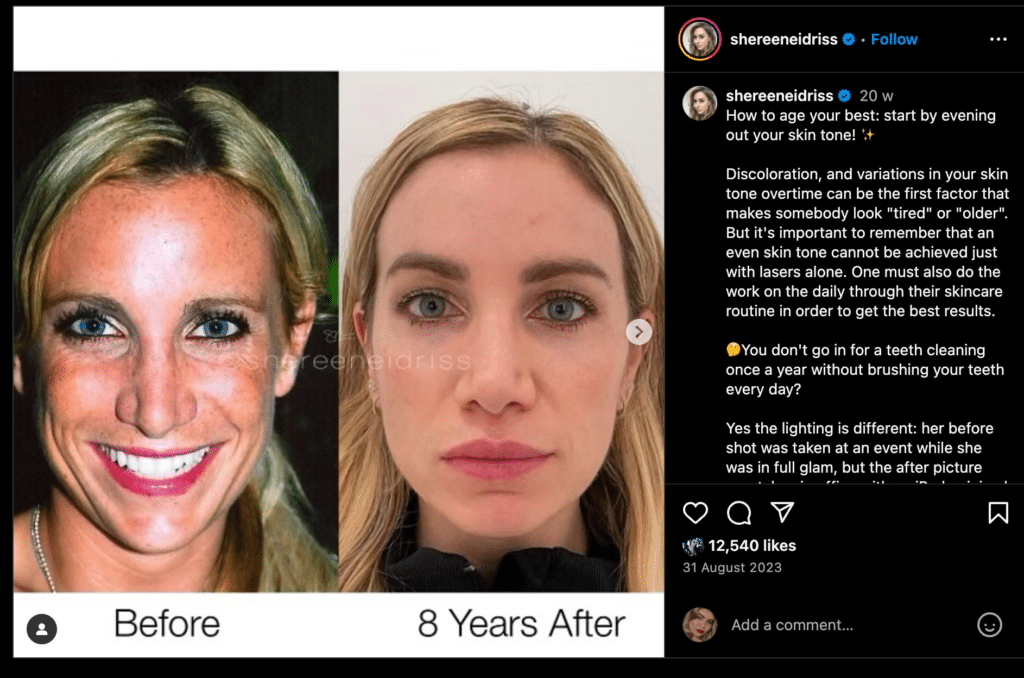
However, remember that you can be held liable for revealing information that may expose a patient’s identity. In this article’s “Protecting patient privacy” section, you’ll find more tips on safely sharing patients’ success stories.
6. Host Q&As
Q&A content allows you to answer common questions and build a connection with your audience. For Q&As, creators usually ask their followers to send them questions. As a result, active members of your audience feel seen and valued.
Here are some ideas for hosting Q&A sessions on social media:
- Use Instagram’s question sticker to collect questions and answer them in stories.
- Gather questions through Instagram/TikTok comments and create a short video for every answer.
- Ask your subscribers to submit questions as comments on YouTube and respond in your next video.
- Hold live Q&A sessions – live streaming is one of the top 2024 video trends, and it’s unique because it prioritizes real-time interactions and feedback.
Here’s a Q&A example from Violin MD, who shares her experience of becoming a doctor with medical students.
You can also ask users to submit questions on one social channel and reply on another. This way, you encourage people to follow and consume your content on different platforms.
7. Test Health Knowledge with Quizzes
Quizzes are engaging and educational, and you can also use them to collect followers’ emails for campaigns outside of social media.
You can create native quizzes on Instagram, but they have limited data collection and analysis capabilities. With an online quiz maker, you can create interactive trivia quizzes and test your followers’ knowledge on health topics.
Source: Opinion Stage
Users can also see clarifications about the correct answers, which provides additional context and helps educate them on the topic.
8. Share Educational Articles
Social media post captions and short-form videos only allow you to share so much about certain health-related topics. While they are good for bite-sized information that is easily digestible by the public at large, sometimes you need to go more in-depth on more complex topics, like for example health insurance portability.
To establish yourself as a thought leader in the medical industry, include some long-form content about important topics in your field in your posting schedule. Whether it’s about diseases, medical procedures, or even the well-being and protection of doctors and nurses, your audience will have something valuable to learn.
If you have a blog where you write your articles, like Kevin MD, you can share them on different social media platforms such as X (Twitter), Facebook, or LinkedIn. If not, create a strategy for sharing curated content from important voices in the industry.
9. Highlight Client Testimonials
Sometimes, the best way to get new clients is to showcase how satisfied your existing patients are with your medical practices. From bedside manner to procedure results, share what people most appreciate about you and your practice.
The easiest way to share these testimonials is by creating branded templates, like Edgemont Dental in the example above. Simply add the reviews to these templates and share them with your target audience.
This way, not only are you proving your expertise, but you are also ensuring a consistent aesthetic on visual platforms such as Instagram.
10. Participate in Popular Trends
Participating in trends on TikTok or Instagram Reels ensures higher visibility and engagement since the posts are more likely to go viral. Stay informed about what popular video templates or sounds are gaining attention with social media users and tailor them to your medical content.
DermDoctor is one of the many creators who incorporate trends successfully in their social media marketing strategies. In the example above, he uses the “jump in the pool fully clothed or…” video trend but gives it a dermatological twist by highlighting how bad certain lotions are for your face.
Challenges of Social Media for Doctors
While social media for doctors has many benefits, you also have to be cautious when building your online presence to avoid any ethical or legal conflicts.
Here are some of the challenges for doctors and other healthcare workers and professional organizations when it comes to social media:
- Offering medical advice online
- Facing ethical issues
- Limiting the spread of misinformation
- Following institutional policies
- Protecting patient privacy
1. Offering Medical Advice Online
As medical professionals, it is best to avoid giving medical advice to your followers because, when you do, you become liable for the results they get.
In an online setting, you don’t have a way to examine a patient or gather details without exposing them to privacy threats. Also, you can’t verify that the information they’re providing is accurate.
Stick to sharing best practices and general tips, but refrain from establishing a doctor-patient relationship.
2. Facing Ethical Issues
Sponsored content, i.e., promotional content paid for by a brand, can lead to ethical conflicts of interest for doctors on social media.
Before deciding to endorse a product, ensure that you’ve researched it in detail and are informed about local legislation surrounding advertising.
Partnering with brands is a typical revenue stream for influencers. Their main legal requirements are to have personal experience with the products they’re recommending and to clearly and visibly disclose advertisements.
However, if you are a physician endorsing a product, your audience can expect it to be clinically tested, proven to be effective, and in line with modern health standards. Medical ethics also require you to share information about adverse effects.
3. Limiting the Spread of Misinformation
Misinformation is a serious concern about all online content. Due to their profession, doctors on social media are responsible for the accuracy of the health information they share. So, take extra care before citing studies and statistics or making bold statements.
When referencing studies, ensure they are reliable, preferably from reputable medical journals. Online creators often share information they’ve heard from other creators without researching the original sources.
That’s how misleading information such as “we use only 10% of our brains” gets diffused and widely believed to be true.
Another pitfall is overpromising. If you make a bold claim and your advice doesn’t deliver, you lose the trust of your audience. It can be especially problematic when patients follow your online advice.
4. Following Institutional Policies
Before starting with social media marketing, you must read your institution’s social media policy.
Most social media policy clauses are common sense – do not post anything that violates the law, looks unprofessional, compromises your employer’s reputation, or discloses confidential information.
However, some institutions are more strict, and they consider improper use of social media for doctors the following:
- Sharing patient pictures even with informed consent
- Posting personal videos filmed on the hospital’s facilities
- Using hospital devices to access social media during work hours.
If you are not sure, it’s better to check in advance to make sure your social media activities are permissible. Address any doubts to your superior or the HR team.
5. Protecting Patient Privacy
As a doctor, you have access to a lot of patient information, and it’s essential to manage it properly.
Start by reviewing the Health Insurance Portability and Accountability Act (HIPAA) – a federal law outlining best practices for protecting patients’ health data.
When giving examples, it’s best to speak in generalities or to make fictional cases. In this way, you ensure that third parties cannot infer the identity of your patients.
If you want to post about a real case, especially when sharing photos, videos, interviews, etc., you must receive written consent from the patient or their guardian. They must understand the potential risks of sharing their story online.
Tips for Social Media Management for Doctors
Running social media campaigns on multiple platforms can become overwhelming. However, there are ways to make your social media management more efficient and less time-consuming.
Here are six tips on how to manage your social media accounts as a doctor:
- Use a social media management tool.
- Batch content creation and scheduling.
- Curate relevant content for your audience.
- Use post templates.
- Engage with your audience using a social inbox.
- Monitor analytics to refine your social media strategies.
1. Use a Social Media Management Tool
Managing social media can be overwhelming for doctors, especially when juggling multiple accounts. Using a social media management tool like SocialBee simplifies this by automating repetitive tasks like content creation and scheduling, saving valuable time.
You can schedule posts in advance, ensuring a consistent presence online without being glued to your phone. Plus, it centralizes everything in one place, making it easier to track engagement and refine your strategies.
By streamlining these processes, you can focus more on what matters—connecting with patients and sharing valuable medical insights.
2. Batch Content Creation and Scheduling
To always have social media posts ready, plan your content in batches. Setting aside dedicated time to create multiple posts at once frees up both time and space in your mind for other important aspects of your strategy.
Once your content is ready, schedule it all at once. The best way to do this is by building a content calendar and assigning certain days and times for each of your content categories. This ensures both consistency and variety. You can easily do this by using a social media management tool.
Save time by using SocialBee to bulk schedule your posts. Create your content in the post editor or upload it through a CSV file, and arrange them into content categories. Then, schedule your categories on your preferred days and times.
SocialBee is perfect for scheduling weeks or even months of content in just a few clicks, keeping your social media calendar filled without manual posting.
Create and schedule your content for multiple platforms in one place with SocialBee
3. Curate Relevant Content for Your Audience
Curating content can save you time while simultaneously establishing you as a thought leader. Ideally, your content should be 80% original and 20% curated across your platforms.
Selecting reliable news sources is the first step in curating relevant social media content. Start by looking for news and trends about healthcare that internet users would find interesting.
Search for websites that cover medical subjects, and follow trending discussions on social media. Make sure to stick to reputable sources and evidence-based medicine for your content; it is especially important not to share misinformation about health.
Streamline your content curation with SocialBee’s RSS Feeds feature. Effortlessly pull in fresh content from your favorite blogs and websites, and share it directly to your social media profiles.
It’s a simple way to keep your feeds active without manually searching for articles or updates. Just add your preferred RSS feed, customize the posting schedule, and let SocialBee handle the rest.
Save time while delivering consistent, relevant content to your audience with SocialBee’s RSS Feeds.
4. Use Post Templates
Using social media templates can really help you streamline your online presence. Let’s say you regularly share health tips. You could design a template that features a clean, professional layout with your clinic’s colors and logo, plus space for the tip itself and a related image. This way, whenever you have a new tip to share, you just update the text and image without having to design a new post from scratch.
Or maybe you often announce webinars or community health events. A template for these announcements can make sure you don’t miss any crucial details like the date, time, and how to register. All you need to do is fill in the specifics for the next event, and it’s ready to go.
Templates aren’t just about making things look good—they save you time.
Canva offers a wide range of customizable templates, so you do not need to start from scratch each time you create new content. You can search for templates that match your goals, whether you want to share educational posts, promote an event, or highlight a personal insight.
After choosing a template in Canva, you can adjust the colors, fonts, layout, and text to match your brand. This helps you maintain a consistent and professional look while still keeping the design true to your style.
The workflow becomes even easier with Canva’s integration inside SocialBee. Once your design is ready, you can open, preview, and import it directly into your post. This keeps your entire planning and scheduling process in one place and saves time when moving from design to publishing.
5. Engage With Your Audience Using a Social Inbox
Effective communication on social media requires both listening and replying, so how you do either can have a big impact. Building a dedicated and active community can be facilitated by approaching every connection as a meaningful discussion.
By using a social inbox, you can monitor and respond to all of your mentions, comments, and DMs from one place. Inform your prospective patients about your healthcare services, address their concerns, and answer their questions in record time.
Stay on top of your audience interactions with SocialBee’s Engage Module. Manage comments, messages, and mentions from all your social media profiles in one unified inbox. This feature helps you respond promptly, engage with your followers, and build stronger relationships—all without switching between platforms.
6. Monitor Analytics to Refine Your Social Media Strategies
Last but not least, keep an eye on how all your efforts are paying off. Digital marketing implies trial and error, but it’s a lot easier to learn if you keep an eye on the results of your work.
Use a tool to monitor metrics such as likes, comments, reach, or demographics, to better understand what you’re doing right and what needs improvement. By tweaking your strategy based on factual data you can ensure better results.
Leverage SocialBee’s Analytics dashboard to gain valuable insights into your social media performance. This feature allows you to track key metrics such as engagement rates, post reach, and audience growth all in one place.
Use the data to identify what content resonates most with your audience, enabling you to refine your strategy and focus on high-performing posts.
Frequently Asked Questions
YouTube, TikTok, and Instagram are the most popular social networking sites for doctors. You will also find certified physicians on Facebook, Twitter, LinkedIn, and even Reddit. Some doctors use specialized networks such as DailyRounds, Among Doctors, Sermo, Student Doctor Network, and Doximity.
As of January 2024, the most popular doctor on social media is Dr. Sandra Lee, who has a strong social media presence and over 33 million followers across all mainstream social networks. Most of her followers come from TikTok (16.7M) and YouTube (8.2M).
Some of the most followed influencers in the medical community on TikTok as of 2024 are:
- Dermatologist @dermdoctor – 18.2M followers
- Dermatologist @drpimplepopper – 16.7M followers
- Plastic Surgeon @doctoryoun – 8.3M followers
- Emergency Physician @lifeofadoctor – 3.9M followers
- Foot surgeon @footdocdana – 2.3M followers
Promote Your Medical Practice on Social Media
Social media is an excellent channel for doctors to market their practice and connect with patients online. But with privacy regulations and the specifics of every platform, it can seem daunting to get started.
SocialBee makes managing multiple social profiles a breeze. It offers an AI assistant to help you build your social media strategy, content creation and scheduling tools, and an interface to manage all your comments and DMs in one place.
Start your free 14-day trial to test all that SocialBee has to offer!

About the author: Evelina Milenova is the Outreach Manager at Opinion Stage. Evelina’s expertise lies in SEO and content marketing – two topics she often writes about on her LinkedIn page.

